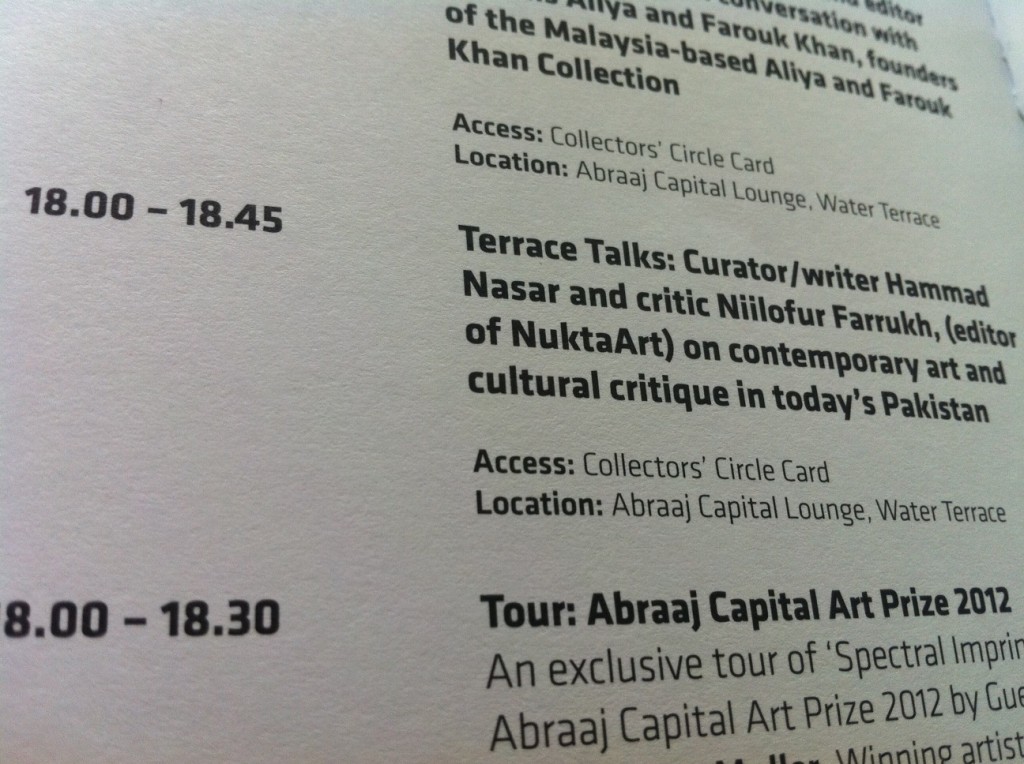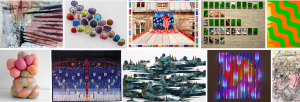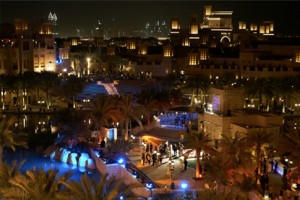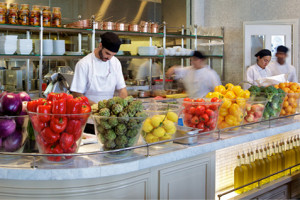Of more than 70 exhibiting galleries at Art Dubai, around a third were European, with another handful New York and San Francisco based. The fair feels, in content and themes, independent from European fairs.
That opening contextualising remark reveals what I now concede to be a frustrating bias in my knowledge of international art, and, as such, the following posts must be prefaced with one remark: this is an approach to an art personally unfamiliar, and for which I lack a contextual framework, and I won’t try to contextualise it. I hope the reasons for this approach can be somewhat validated through some thoughts on a talk which was part of the programme of terrace talks.
Niilofur Farrukh, editor of contemporary Pakistani art magazine NuktaArt and curator and writer Hammad Nasar of Green Cardomom Gallery, London, gave a joint talk, somewhat innocuously titled “On Contemporary Art and Cultural Critique in Today’s Pakistan”. What was contained within the 45 minute discussion was an arresting introduction to something which I think many European and American art lovers / critics / artists probably know to be true, but rarely concede: we just don’t know very much about international art, unless that is limited to an Atlantic circle of “international” art, peppered with a few token references to “other” masters.
Farrukh opened the discussion by setting up a polarity of contexts for herself and Nasar, as resident in Karachi she positioned herself “inside”, Nasar as resident in London, “outside”. Both advocated that “Reformulating the Context” is paramount. This unravels a question rarely posed: what creates the context? In brief, the contextual frameworks which are too often an unswerving part of the established landscape of art consumption: centuries of documentation, criticism, written matter, exhibitions, schools of thought, art schools themselves, art prizes, art fairs… In essence, all of the discourse which takes place beyond the artist’s studio, does not exist in Pakistan.
Or, did not exist until recently, as illustrated by the fact that there are 180 million people in Pakistan, and one taught PhD on Pakistani art history. Farruukh and Nasar went on to give a short run through of what has been evolving both inside and outside of Pakistan. Much of this indicated a new concerted effort to document the contemporary and the history. This is an attempt to create a context and a narrative to facilitate knowledge sharing. At the core of this attempt are exhibitions, the means to “create, capture and disseminate” but, as Nasar remarked, “if it doesn’t get read, it doesn’t get seen”, and for a long time, it wasn’t even being written about.
The following anecdote told by Nassar about an exhibition of Pakistani art in New York in 2009 suggests some of the issues to be considered if a new geography of the international is to be mapped, and shifted away from that limited Atlantic circle…
The exhibition, Hanging Fire, was written about, and the New York Times wrote about it three times, but, according to Nassar, much of what was written was not art criticism, but news reportage and current affairs. The question becomes “what is Pakistan”, not who is this artist and what is their work: do we view European artists like this? What does this imply about the way we contextualise art? What struck me if this style of criticism is true, is that this approach runs the risk of reducing art and artists to a lens for those outside to understand those inside better, thereby positioning the art as “other”.
I leave the questions open, because I don’t know the answers, but I hope that this short introduction will allow my remarks on Art Dubai a degree of honesty that doesn’t denigrate or falls into the trap of contextualising by reference to what happens and has happened in Europe or the US, or a European perspective on “other” art.








